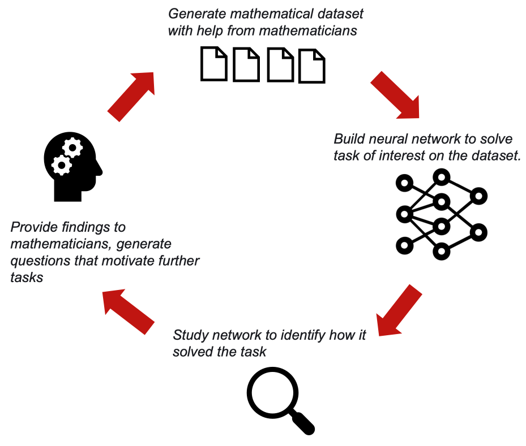Giant Isopod Deep Learning to Advance Pure Mathematics
PI: Timothy Doster, Henry Kvinge, Davis Brown
Objective
Develop methods to leverage deep learning to accelerate mathematics research by pursuing the following:
- Comprehending how state-of-the-art machine learning can be used to better understand and analyze digital, algorithmic, and mathematical data.
- Discover optimal approaches to detecting patterns in large volumes of algorithmically generated data.
- Adapt explainable artificial intelligence techniques to uncover human interpretable algorithms from statistical machine learning solutions.

Overview
In contrast to other scientific domains, the impact of deep learning on research in mathematics has so far been limited. This is despite the fact that pure math research often involves looking for patterns in complicated datasets, a task that deep learning was explicitly designed for. Two challenges preventing deep learning from being more broadly applied in pure mathematics are the lack of deep learning architectures and training techniques that fit the types of questions and data that pure mathematicians focus on. Moreover, off-the-shelf deep learning tools currently available lack the type of transparency and explainability that mathematicians usually rely on to drive toward conjectures, theorems, or proofs, which are the markers of progress in the field.
To overcome this limitation and advance pure mathematics we will develop a deep learning-based tool suite with methodologies that address the specific kinds of questions that form the basis of pure mathematics and help translate model output into a form that can guide theorem creation.
Impact
The greatest impact of deep learning so far has been in signal data (image, audio, etc.) and text. We will bring similar capabilities to the analysis and exploitation of data generated by algorithmic and mathematical processes, including:
- reverse engineering of algorithms
- detecting patterns in algorithmic data involving discrete objects like sets, graphs, permutations, etc.
- finding more efficient approaches to algorithmic processes
Publications and Presentations
- Jenne H., D.R. Brown, J.T. Warley, H. Chau, T.J. Doster, and H.J. Kvinge. 2023. "Can We Count on Deep Learning: Characterizing Combinatorial Structures with Interpretability." In MATH-AI: The 3rd Workshop on Mathematical Reasoning and AI.